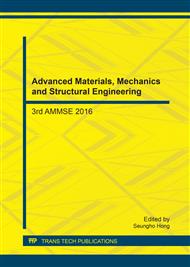p.59
p.64
p.71
p.78
p.84
p.89
p.93
p.102
p.107
Synthesis of Glucose-Sensitive Microcapsules via Layer-by-Layer Assembly for Controlled Insulin Release Applications
Abstract:
Drug delivery systems using polymeric materials have been under intensive investigation and have been reported to show effective drug targeting specificity, lowering system drug toxicity, improving treatment absorption rates, and providing enteric coatings against biochemical degradation. The layer–by–layer (Lbl) assembly of polyelectrolytes through electrostatic interactions can be readily tailored to control the size, structure, and stability of the film and microcapsules. In this study, microcapsules were fabricated by alternately depositing poly (dimethyldiallylammonium chloride) PDDA, glucose oxidase (GOx), and polyacrylic acid (PAA) to form multilayer shells on a MnCO3 template and onto insulin particles by Lbl method. Also, the physical characteristic and release mechanism of thin films incorporating insulin sandwiched between [2(dimethyl amino) ethyl methacrylate] (PDMAEMA), with polymer/GOx layers were compared with the fabricated microcapsules. The synthesized shells have shown stability at pH 4 and become unstable at neutral pH. The fabricated insulin loaded microcapsules and films showed an on–off mechanism in the presence of glucose. Exposure to glucose solutions resulted in the production of gluconic acid; as a result, there was a change in the conformation of the polymer, releasing the embedded insulin. The drug release profiles observed indicates their potential application for the controlled release of insulin.
Info:
Periodical:
Pages:
84-88
Citation:
Online since:
February 2017
Price:
Сopyright:
© 2017 Trans Tech Publications Ltd. All Rights Reserved
Share:
Citation:


